THE RESTORATION OF THE HISTORIC PIPE ORGAN
IN THE CHURCH OF SANTA MARÍA DE LA ASUNCIÓN
TLACOLULA, OAXACA
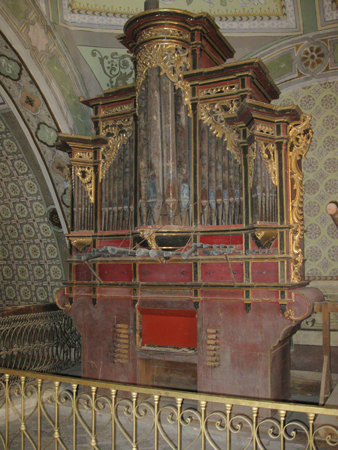 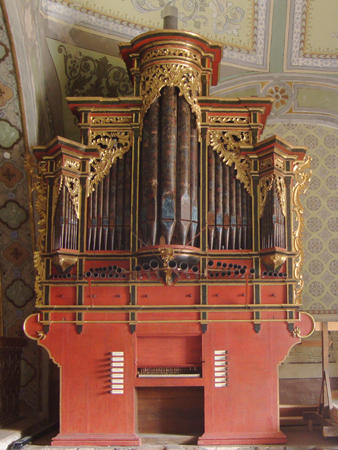
ABOUT THE ORGAN
Construction date: 1791, gilding and tuning 1792
Organbuilder: Manuel Neri y Carmona (Oaxaca)
Characteristics: 8´stationary organ with eight registers on the left side and seven on the right; 45 note keyboard divided c’/c#’; 336 flue, reed, and wooden pipes; restored pitch 415 Hz; height 4.36 m, width 3.25 m, depth 0.86 m.
DISPOSITION
Left hand: 21 notes C-c’ with a short octave
1. Clarines (Bajoncillo) 4´
2. Flautado mayor 8´
3. Bardón 8´
4. Octava 4´
5. Quincena 2´
6. Diecinovena 1 1/3´
7. Veintidocena 1´
8. Trompeta real 8´
Right hand: 24 notes c#’-c’’’
1. Clarines 8´
2. Flautado mayor 8´
3. Bardón 8´
4. Octava 1° 4´
5. Quincena 1° 2´
6. Octava 2° 4´
7. Quincena 2° 2´
THE RESTORATION OF THE TLACOLULA ORGAN
Restoration of the case and façade pipes: Usanza company, Eric González Castellanos (Oaxaca), director
Restoration of the organ’s mechanism and sound: Gerhard Grenzing organ company (El Papiol, Spain), Andreas Fuchs project director
Project initiative and organization: Instituto de Órganos Históricos de Oaxaca (IOHIO), Cicely Winter, director
Financing: Fundación Alfredo Harp Helú Oaxaca (FAHHO), Marciano Sánchez (from Tlacolula), the Pro-Organ Committee of Tlacolula, and the IOHIO.
Ecclesiastical support: Salvador Cruz Sánchez, the priest of the Tlacolula church
Institutional authorization and overview: Coordinación Nacional de Conservación del Patrimonio Cultural (CNCPC) del Instituto Nacional de Antropología e Historía (INAH)
Main challenges: repair the woodworm damage of the case and interior components; replace missing pipes; add extensions to the pipes to recover the historic tuning of 415 Hz, since all had been cut to raise the pitch to 440 Hz.
Reinauguration: February 23, 2014, with a mass celebrated by the Archbishop of Oaxaca-Antequera and an organ and voice concert presented by Roberto Fresco, Lourdes Ambriz, and Rafael Cárdenas as part of the IOHIO’s Tenth International Organ and Early Music Festival.
Ongoing activity: The organ is played regularly for masses (including weddings, baptisms, quinceaños, and special religious festivities), and concerts. It is maintained by the IOHIO.
PHASE 1: RESTORATION OF THE CASE
AND PAINTED FAҪADE PIPES
December 2012 – 2013

Removing the organ pipes
 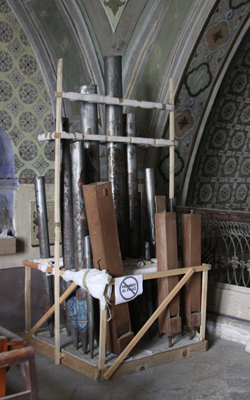
| |
Fumigating the case |
|
Storing and protecting the largest pipes |
|
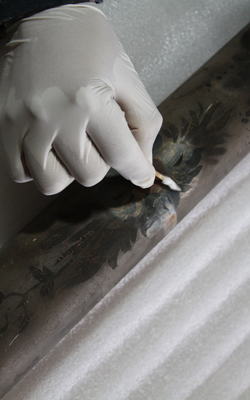 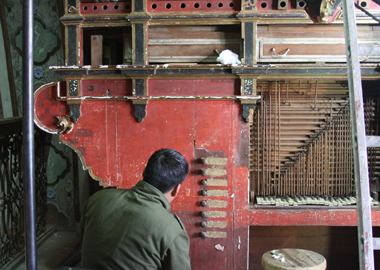
| |
Cleaning the faҫade pipes |
|
Cleaning the case |
|
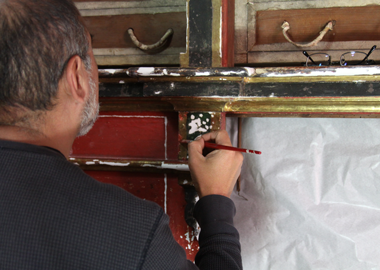 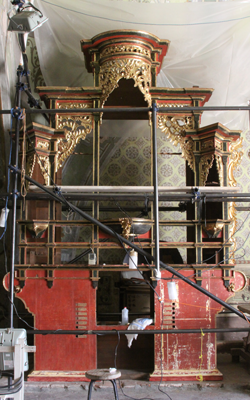
| |
Consolidating the paint |
|
The paint is consolidated on the left side |
|

Decorative moldings before and after
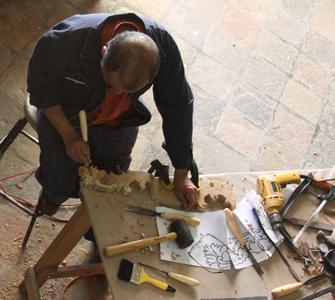 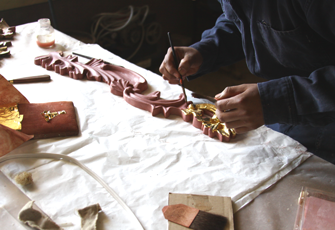
| |
Copying a missing carving |
|
Applying gold leaf to the new piece |
|
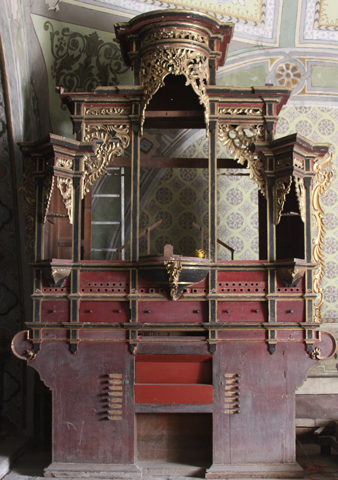 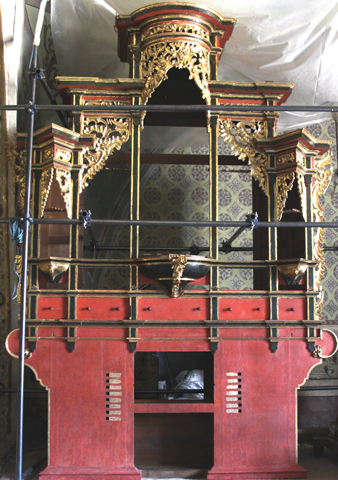
Organ case before and after restoration

The restored façade pipes
PHASE 2: RESTORATION OF THE ORGAN’S MECHANISM AND SOUND
October 2013 - February 2014
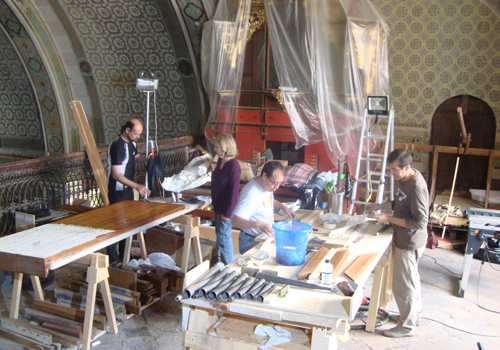
The restoration shop was set up in the choir loft of the Tlacolula church
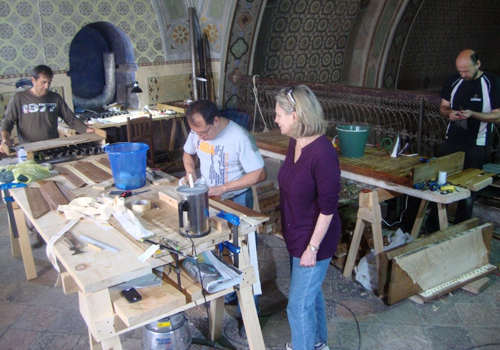
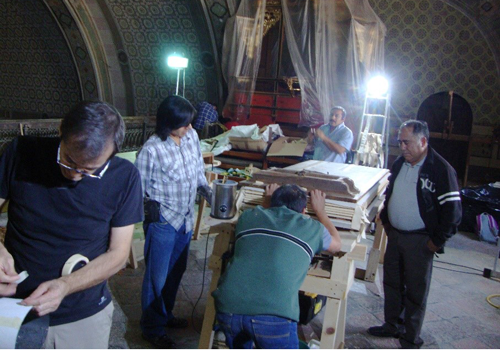
The priest, padre Salvador Cruz (right), viewing the work in process
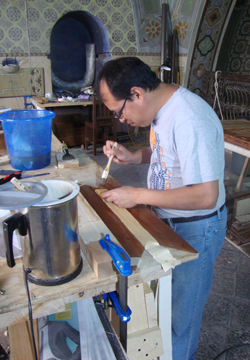 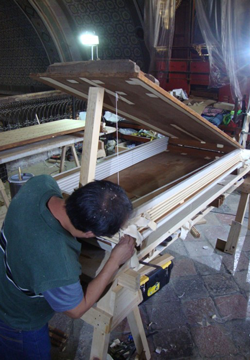
Restoration of the bellows by Oaxaca organbuilder David Antonio Reyes
| |
Preparing and gluing the leather |
|
Assembling the bellows |
|
 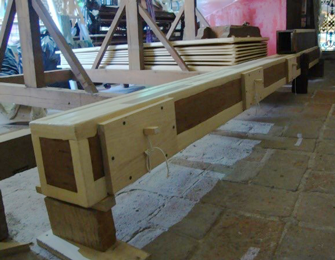
| |
The first bellows is finished |
|
Restored wind trunk |
|
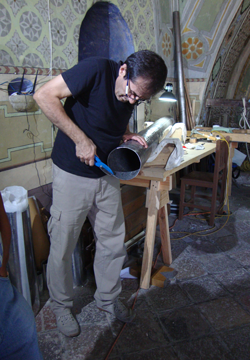 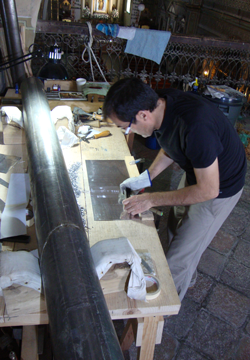
| |
Preparing the pipes for extensions |
|
Cutting pieces for extensions |
|
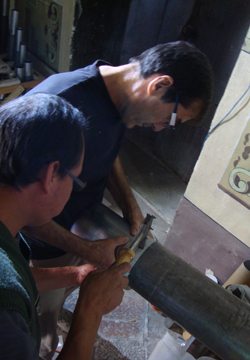 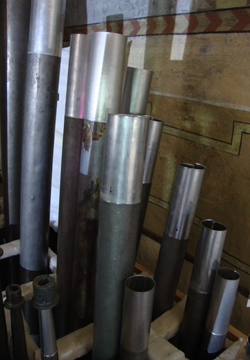
| |
Sottering the pipe extensions |
|
Pipes with added extensions |
|
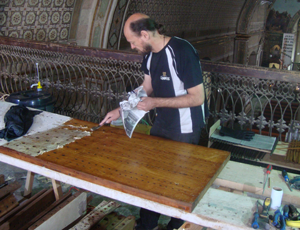 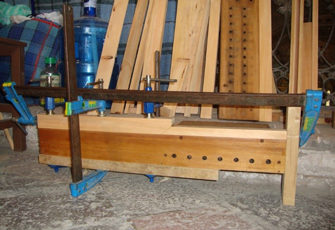
| |
Cleaning the base of the wind chest |
|
Restoring the channel board |
|
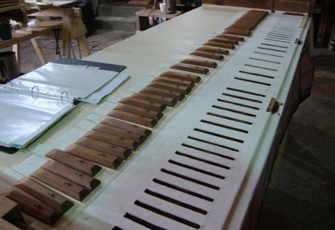 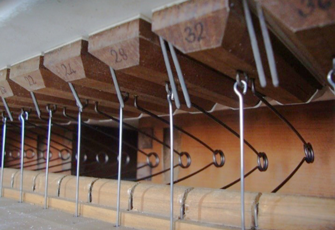
| |
Pallets ready to be installed |
|
Pallets installed |
|
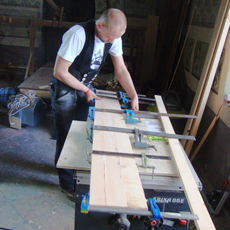 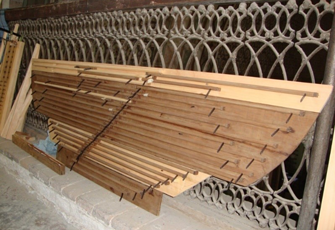
| |
Assembling new pieces of the roller board |
|
Roller board restored |
|
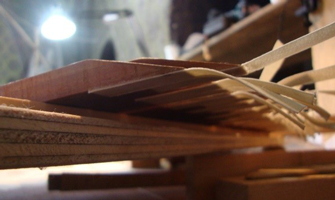 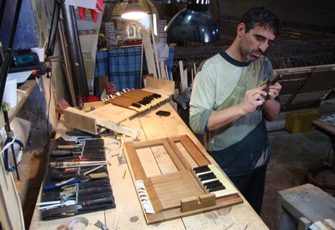
| |
New leather hinges for the keyboard |
|
Positioning the keys in the key bed |
|
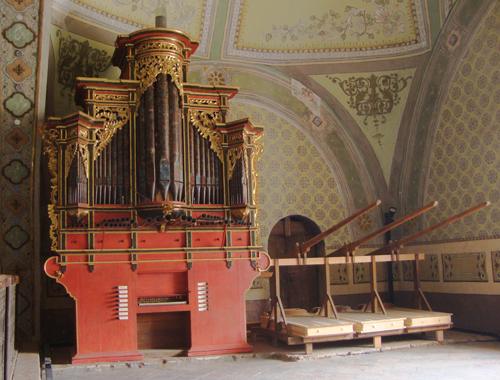
The finished organ
|































